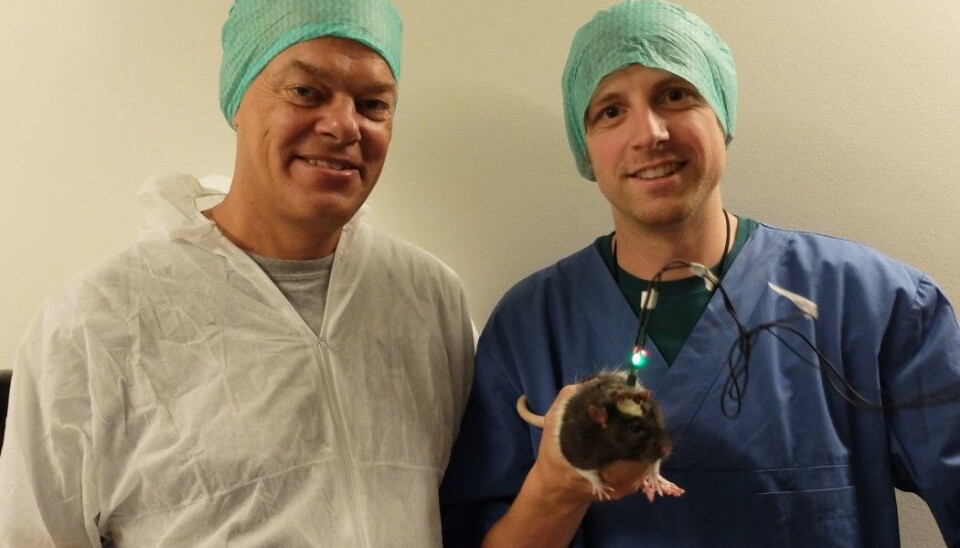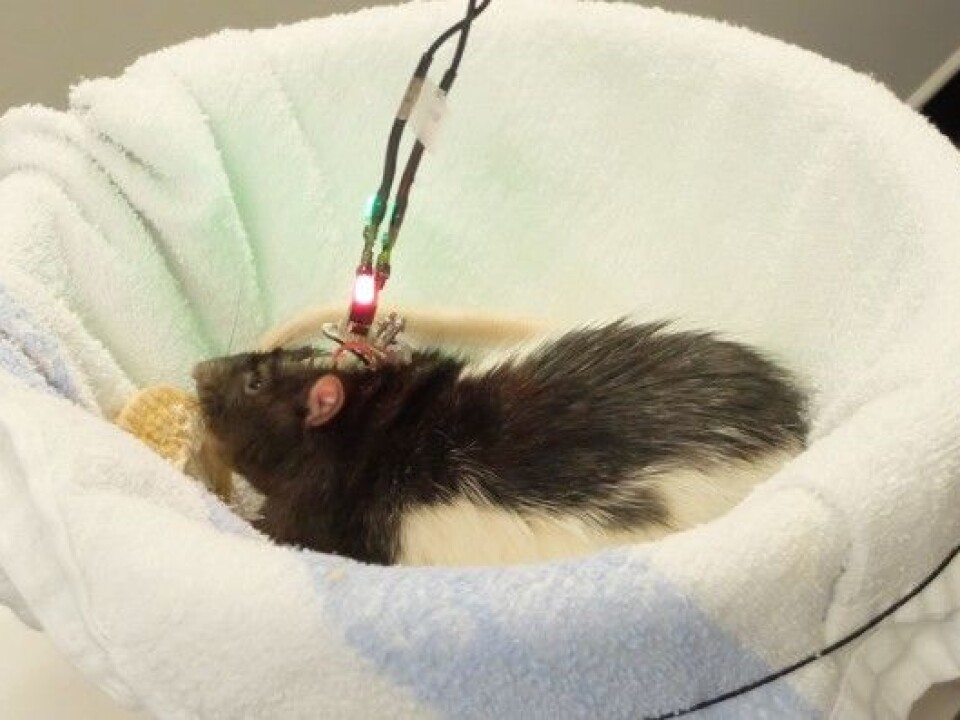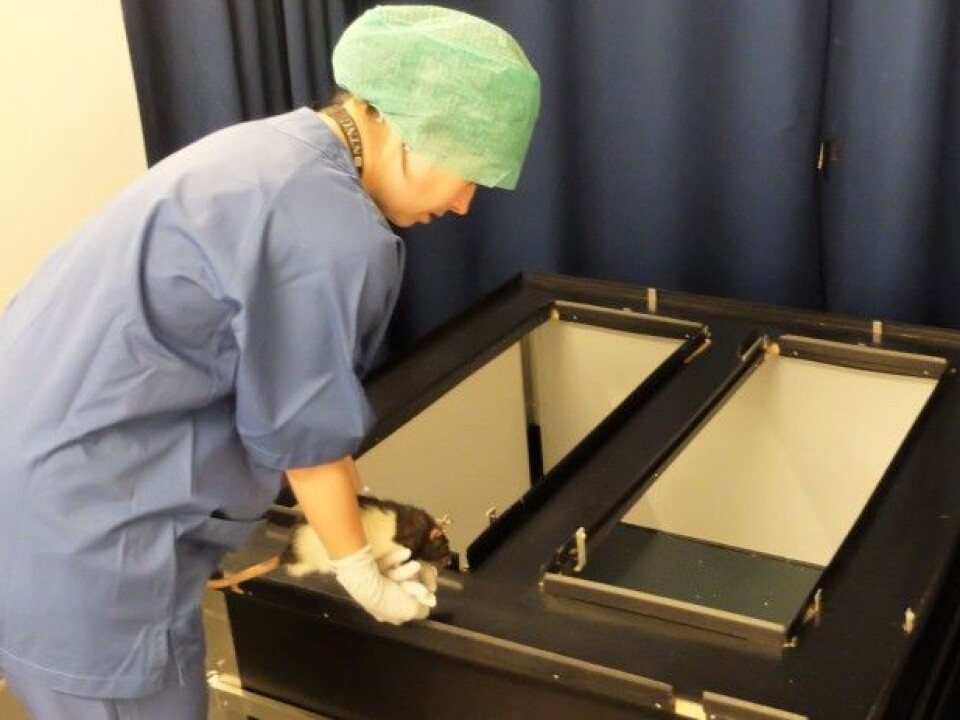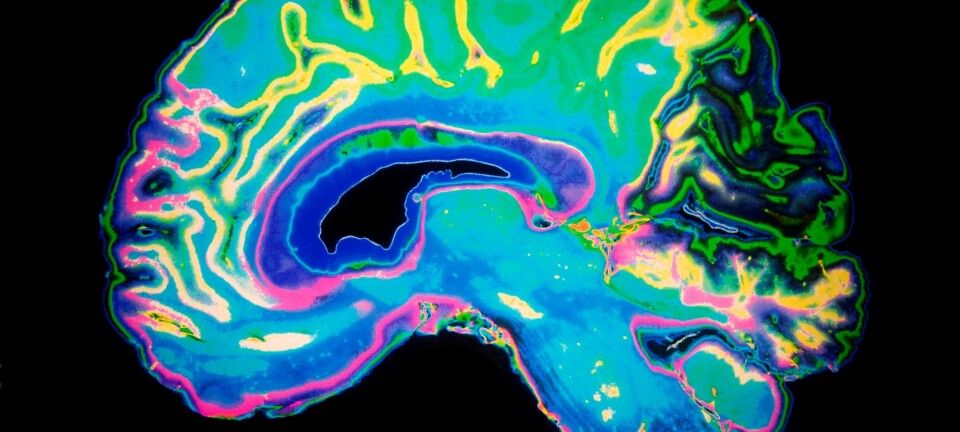
Breakthrough: How the brain keeps track of time
Norwegian scientists Edvard and May-Britt Moser were awarded the Nobel Prize in Medicine for their studies on sense of direction. Now they have found the brain cells that place our memories in the right order.
A new study from Nobel award winning scientists in Norway reveal how the brain keeps time.
In the part of the brain called the lateral entorhinal cortex, they have found nerve cells that give each moment its distinctive signature.
“We believe this code keeps track of the order of events that happen. The code gives us a sense of time in relation to events," says Edvard Moser from the Kavli Institute of Systems Neuroscience, Norway.
He calls this coding, episodic time, and we are not talking about clock time.

In the simplest terms, the signals from this part of the brain are responsible for something that we have all experienced: Time seems to pass more quickly when you are having fun.
Moser and colleagues have now found traces of this understanding of temporality in the brains of the laboratory rats.
Read More: Mice experiments explain how addiction changes our brains
Mysterious time
“Time is much less well understood than space. A lot has happened in terms of space in the last ten to fifteen years, but time has been a mystery," says Moser.

In 2014, May-Britt and Edvard Moser shared the Nobel Prize in Medicine with John O'Keefe from the University College London in the UK, for their discoveries of cells that constitute the brain’s positioning system.
In the brain area called the medial entorhinal cortex, they found cells that behaved surprisingly predictably. The cells fired in certain places when the rats moved, and divided the world into hexagonal units.
The researchers showed how the brain maps our location using place cells that tell the brain about landmarks, border cells that tell it about boundaries, head direction cells and speed cells.
Directly adjacent to the medial entorhinal cortex is its sister area, the lateral entorhinal cortex. Scientists found no activity pattern here. On the contrary, the cells seemed to fire at random.

"The cell activity was just chaotic," says Moser. “The signals were changing all the time.”
And in hindsight this is quite logical. After all, time is always changing.
Curiosity piqued
Eight years ago, Moser's student, Albert Tsao, who was then based at the Norwegian Brain Centre at NTNU, decided to find out what was going on in this chaotic little area of the brain.

After six years, says Moser, they began to suspect that it had something to do with the encoding of time. That's why the cell activity differed from one time to the next.
"If the cell was coding for time, then the signal would need to be different each time," says Moser.
So, Tsao set up experiments that could crack the code.
Read More: Why you should read and train to boost your brain
Rats in search of biscuits
Inside the laboratory, Jørgen Sugar follows the speckled rat that runs around in a spacious box on the floor. On its head is a device that flashes red and green. A wire extends from the rat's head into a computer that converts signals from the brain cells to points and wavy graphs on the screen next to it.
From a speaker, the sound of single cells in the lateral entorhinal cortex crackles.
Sugar has spent many hours and days in the laboratory. He has overseen most of the rat trials that form the basis of the new study.
He continually throws little temptations to the rat to make sure it stays active.
"They make their own food selections," says Sugar.
Maize and millet puffs are on today’s menu. Pepita biscuits and chocolate Weetos are also kept at the ready.
Carefully thought out experiment
The sensors that measure activity in a single brain cell are no more than 17 microns wide – or 17 thousandths of a millimetre.
Before an experiment can begin, the rats need to get used to the sensors on their heads, and they have to be trained if the experiment involves solving tasks. This can take several weeks.
"Each test lasted two hours," says Sugar.
The rat was in the box and gathered food for five minutes before taking a break in its ‘rest nest.’ Then it was back to the box for a new round of free activity. This was repeated twelve times.
"We’d occasionally change the colour of the walls in the box, from white to black and back again," says Sugar.
The colours were changed randomly so as not to be predictable.
"We wanted to see how the nerve activity changed over time. The reason we moved the rat in and out of the box was to break up the two-hour session into smaller ‘episodes’,” he says.
The scientists conducted the same experiment on rats with electrodes in other brain areas. But it was only the activity in the lateral entorhinal cortex that seemed to have anything to do with time. Here the rat kept track of the length of each episode and of each of their sequences.
Read More: How your brain decides whether to run or walk
Impossible to see connection at first
It turned out that the cells in this region of the brain were indeed coding for time. Not just a single cell here and there, as had been found in the sense of direction, but bundles of them.
"Hundreds or thousands of cells work together to make a time signal," says Moser.
It wasn’t possible to recognize this relationship while the experiments were happening. All the data therefore had to be sent to Tsao, who has now moved to Stanford University, USA.
Moser and Sugar had to wait patiently for Tsao to run huge amounts of data through large statistical analyses.
A pattern emerges
Once the data were processed they saw a pattern in how the cells behaved.
The activity was greatest as soon as the rat was put into the box. Then activity dropped as the minutes passed. The next time the rat was placed in the box, after a rest, the cell activity was high before it dropped again.
"A lot is going on at the start of a round," says Sugar.
“The rat needs to orient itself. It has to determine if there’s food or other rats in the box and if it’s the same box as before,” he adds.
Eventually the rat realises that not much is happening anymore. It’s like the sand in an hourglass that slowly runs out. When a new event occurs – in this case a new round in the box – the hourglass is turned over.
The researchers observed that in some cells the activity dropped both during each round in the box and throughout the experiment. The activity in other cells was the opposite, increasing throughout the experiment and during each round.
When they were able to look at all this activity at once, the researchers could see whether the signals originated from the second, third, or ninth visit in the box.
"We believe that rats use everything that changes in their environment to calculate approximately how much time has elapsed. If a lot is going on, it’s easier for the brain to calculate a time signal than if little is happening," says Sugar.
Read More: Big data: necessary but insufficient to understand the brain
Time related to experiences
The researchers believe that this area of the brain produces a sense of time that is related to what we experience.
"If you think about it, that’s how humans and probably many mammals experience time. Our sense of time is determined by our experiences," says Moser.
In order to be absolutely sure, the researchers set up another experiment. They wanted to see what happened to the lateral entorhinal cortex activity when a rat was made to repeat the same thing over and over again.
On an assembly line
The researchers trained the rats to run laps through a maze shaped like a figure of eight. They were supposed to alternate turning left and right at the intersection. Apart from that, all the laps were the same.
This format enabled the researchers to see from the brain activity where along the maze route the rats were located, but they couldn’t see if the rats were on lap number three or nine.
The rats were no longer able to distinguish what lap they were on and were probably confused about how long they had been running.
"When we create a very monotonous environment, it becomes more difficult for the rat to maintain a sense of time. But within one lap where things change very quickly, they manage to keep track,” says Sugar.
Transferring this concept to human beings: Your brain activity in the lateral entorhinal cortex could resemble that of the rat in the figure of eight maze if you have a job that is very repetitious.
Read More: Traumatic brain injuries linked to dementia risks
Neuroscientist: “Breakthrough” results
Neuroscientist Ylva Østby from the University of Oslo, Norway, describes the new results as “very promising” in terms of understanding how memory, time and place are connected.
The findings are consistent with how we experience time subjectively, says Østby to ScienceNordic’s sister site forskning.no.
"We have a relative relationship to our own time and the past, and the study shows that time is also relative at the cell level," says Østby.
Sugar stresses however that they have not found a "clock" in the brain per se and that metric time, or clock time, differs from episodic time.
Episodic time keeps track of the length and sequencing within an experience. It is related to what are called episodic memories.
“The function of episodic time is not to estimate clock time. The purpose is to organise memories in an orderly sequence of events," says Sugar.
“Episodic memories are often defined as ‘where, what and when,’" says Østby. "Being able to show the neurological basis for the ‘when’ is a great breakthrough.”
Opens new doors
Exploring the secrets embedded in the lateral entorhinal cortex has been a long process, says Moser, who cannot point to a simple eureka moment.
"This is how it usually goes – the research progresses step by step," says Moser.
"But when we realised what we had found, it was a very good feeling. Suddenly things made a little more sense – things you hadn’t understood before.
The Nobel Prize winner is excited to see what comes next. The natural next step would be to investigate what happens if you ‘turn off’ the cells in the area that codes for time. What happens to the memory?
"We’ve already seen some hints about this," says Moser. "I would guess you’d have trouble remembering the sequence of events.”
The results are published in the scientific journal Nature.
----------------
Read more in the Norwegian version of this article at forskning.no
Translated by: Ingrid Nuse

































